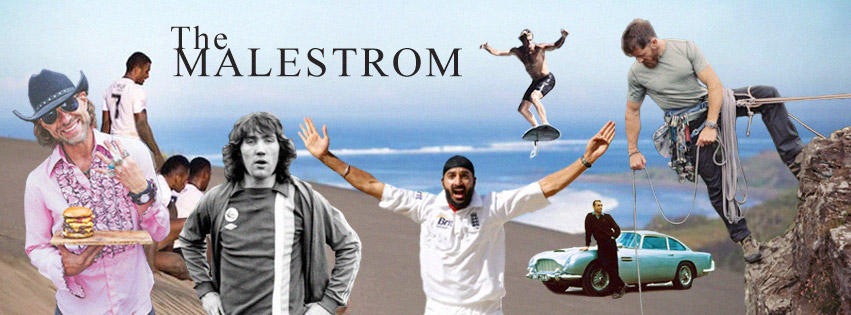
Celebrated sailor Simon Walker has been living a life of adventure ever since he signed up to race around the world backwards in the 1989 BT Global Challenge. Over the years Simon has sailed around the world ‘the wrong way’ twice, across the Atlantic Ocean seven times and has led two expeditions to the Arctic Ocean. Currently you’re more likely to find him cruising around the skies with a Paramotor strapped to his back, a perk of his role as managing director of the company Parajet.
We caught up with Simon recently to speak about his amazing sailing exploits, including the hairy moments and the mental preparation it takes to spend extended periods out at sea. As well as learning about the freedom of flying solo using a Paramotor.
The MALESTROM: How did you get into round the world sailing?
Simon Walker: It was 1989 and I was watching British adventurer Sir Chay Blyth announce this crazy idea of sailing the wrong way around the world with a pro/amateur crew and he was looking for volunteers to take part. Rather naively I thought that it sounded like fun and signed up to it without really knowing what I was getting into. Then in order to get more experience I started to deliver yachts for a living, basically for nothing, and did many Transatlantics, ultimately a hobby turned into a profession.
I spent all of my 20s racing and delivering boats, running high latitude expeditions, going up to Arctic Norway and from the west coast of Scotland to Spitsbergen and all of these places. I guess the highlight was the second around the world race where I was lucky enough to be appointed as skipper of Toshiba. That was a nine month race where I led a crew of fourteen the wrong way around the world, starting off in Southampton, then belting down to Rio, which was fairly straightforward down the Atlantic.
Then when the wrong way really kicks in is going around Cape Horn and turning right into the Southern Ocean all the way to New Zealand, battling against all the winds and currents in the roaring 40s and 50s and even sixty degrees, where you’re constantly beating into the wind as you’re zig-zagging into it and avoiding the icebergs.
TM: For those that don’t know. Going the ‘wrong way’ around the world is essentially going against the wind…
SW: It’s exactly that. If you think about a round the world race, it’s really a race around Antarctica. You go down the Atlantic, rattle around Antarctica, then you go back up the Atlantic again. The winds in the Southern Ocean all travel from west to east. So, if you’re in any of the other round the world races, like the Volvo or the Vendée Globe, you’re going west to east with the winds, whereas with these races we’re going the wrong way against the prevailing winds and currents, so it’s harder, longer and tougher in many ways.
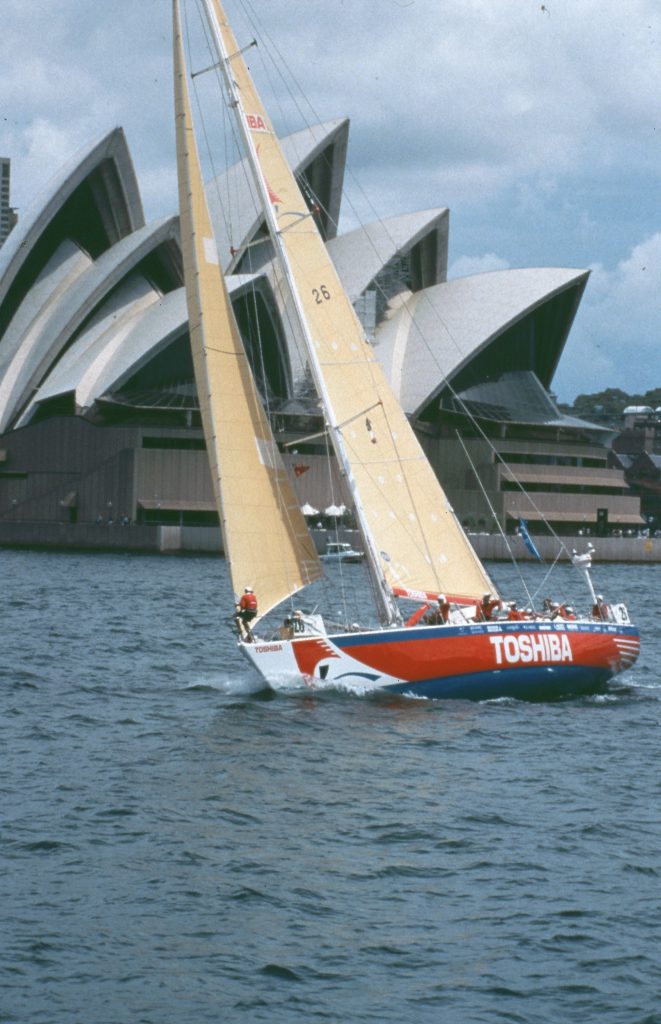
TM:Did you do a lot of the training on the job and through hands on experience?
SW: On my first round the world race I was lucky enough to be the first mate, the second in charge on a boat called Rhone Poulenc, so, you have that experience. But across all my adventuring career, my business career and now my flying career, what I’ve really loved is the learning and the personal development of trying to apply the lessons from one discipline into another, I think that’s really fascinating.
So it is learning on the job, but it’s also being curious about what did I do? What results did I get? What do I need to change? Whatever field of life we’re in, I think that’s really important.
TM: How physically demanding is it?
SW: What I love about the ocean racing is it’s demanding physically, mentally and emotionally, in so many different dimensions. But on the physical side it’s very hard work. So in the Southern Ocean you’re planning the food menu where it’s freezing cold and physically it means hugely intensive anaerobic bursts of energy where you’re sitting around for an hour and then suddenly the wind changes you’ve got to change the sails, keep your balance on the boat and your sweating from really hard physical work. Then your back to sitting and getting cold again, so you need a huge number of calories to keep yourself warm.
The boat’s constantly rocking and rolling, so just being below you’re standing up constantly having to adjust your position to try and keep your footing, so it’s physical on many levels.
There’s also the discomfort with the cold, the water temperature is a couple of degrees above freezing and your constantly wet with waves breaking over the boat. So you’re being doused with cold water and you’ve got the wind chill factor, it might not be as physically hard work as running a marathon, but it’s draining being that cold and doing it for so long. The longest I’ve been out at sea is 42 days where your doing four hours on, four hours off, non-stop for 42 days. That’s pretty intense.
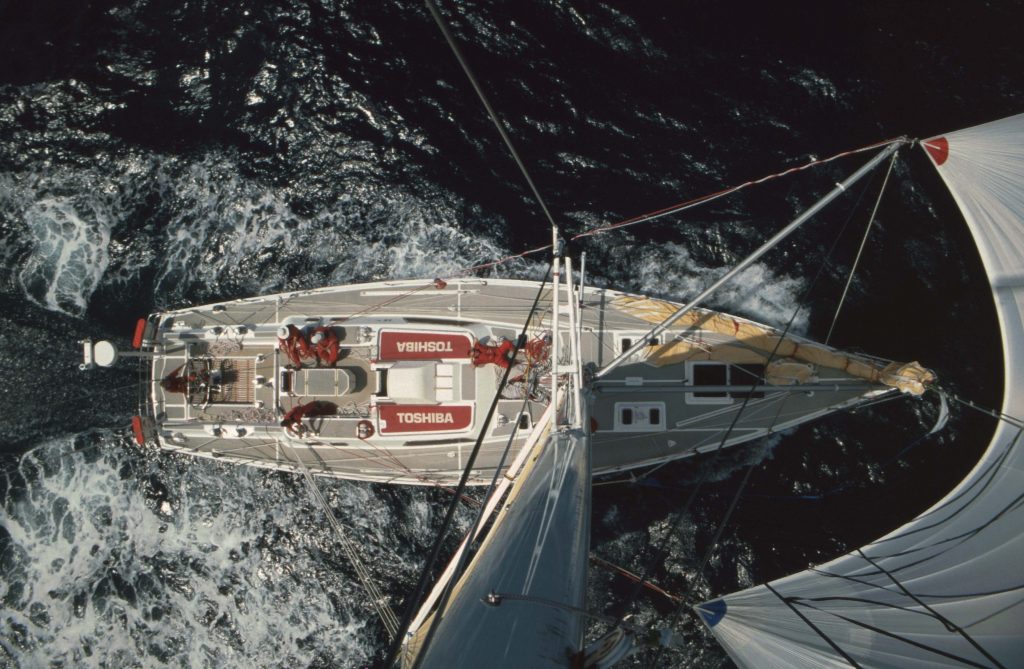
TM: That must take it’s toll. If only as much in the way your sleep is broken up?
SW: It’s pretty wearing. As skipper I was out of the watch system, so what I would try and do was to be up at the worst watch every night, between 2 and 6 am, so I could basically give one person a night off so they could manage to get three 4 hour periods of sleep. But yes, it’s pretty brutal.
TM: You mentioned the mental side before, that must have been equally difficult, if not more so than the physical aspect?
SW: Like anything you train for it and knowledge dispels fear. And anything you can’t train for, like dismasting and hitting icebergs, you can mentally and verbally rehearse those. I was a great believer in talking through the what if’s with people. Firstly to dispel the fear, but also to make sure we were prepared if bad things happened to us.
TM: How long does it take to sail the wrong way around the world?
SW: That’s nine months. The whole campaign takes around eighteen months, you have about eight or nine months where you’re training and preparing the crew and getting the boat together. Then the race itself is about nine months around the world.
TM: We all know something about isolation with what we’ve been going through. How did you cope being stuck with a small group for lengths of time?
SW: It is intense. You literally can’t go more than 70 feet away from these other people. You develop ways of getting on with each other. You try and avoid gossip, there’s a sailing expression called ‘scuttlebutt’ which basically means gossip, so we’d try and keep away from that. So if someone was bitching about a crew member to me, I’d say go and talk to them directly about it.
I think the other thing, which is relevant to this Covid situation, is worry about the things you can change and control the controllables, don’t worry about the things you can’t. We used to say, with what’s in front of you, don’t worry about what’s going to happen in three weeks time, cause we can’t control that, but what we can do is have a really good watch tonight, we can put ourselves in a great position and keep the whole boat together and look after each other. Do what you can do today and don’t worry too much about uncontrollables in the future.
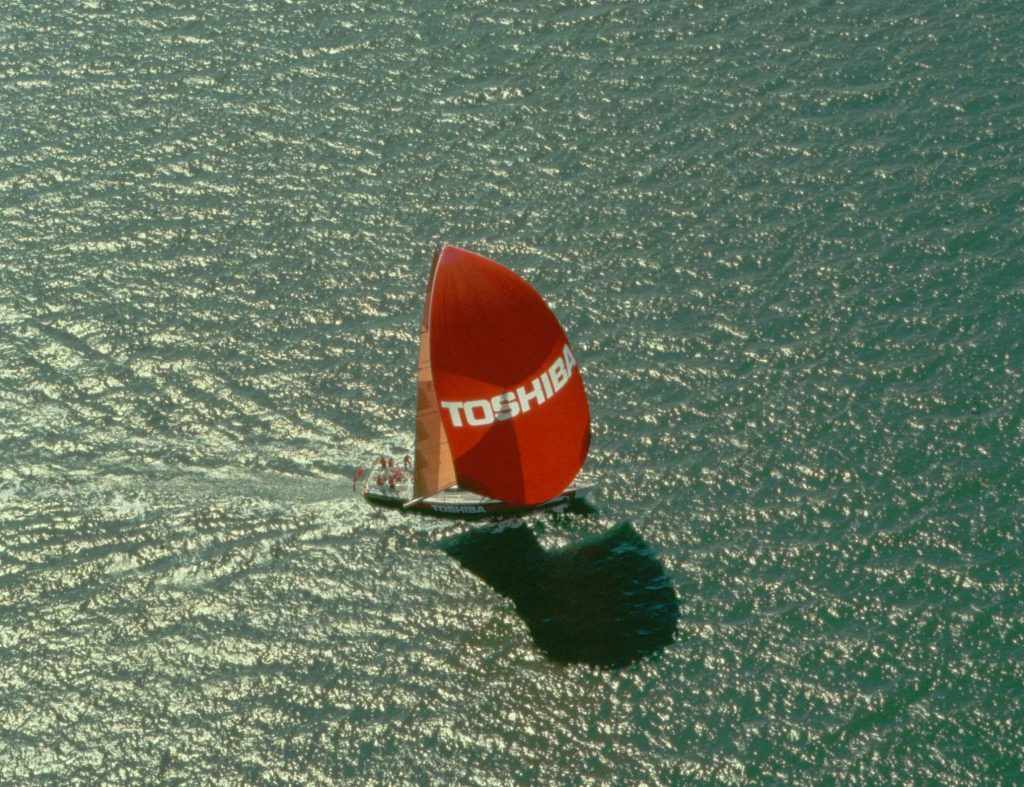
TM: What was one of your most enjoyable sailing trips?
SW: A race I really enjoyed a few years ago was The Kraken Cup, which was where we were racing Ngalawa, which are traditional East African fishing boats, like a dug out canoe with a couple of outriggers. Through a company I’m part of, The Adventurists, we’d arranged an offshore race through the Zanzibar and the Spice Islands in these boats.
That was absolutely fascinating, because no matter how experienced you are, it’s hard to apply the skills you have to that kind of boat and you can be made to look a real charlie. The local kids who were only fourteen were made me look like an idiot, but that was a brilliant experience.
TM: You must have had some hairy moments over the years as well?
SW: I think the single passage that was the most testing was when I was skippering Toshiba, racing from Sydney to Cape Town. That’s an area in the Southern Ocean where we had seven gales and three storms one after another, a storm is force ten, a gale is force eight. Pretty much everything on the boat broke, the generator, the heating system, the electronics, it was a constant war of attrition keeping things going on the boat.
The sails were breaking and the worst thing was we were three weeks outside of Cape Town and had a guy who broke his leg, he cracked his femur, which is potentially a life threatening situation and we were way out of helicopter range. We just had to try and keep him alive and comfortable for those three weeks. Having the responsibility for him and the boat and being in those horrendous conditions was something I wouldn’t like to repeat, but I’m pretty proud of.
TM: Of course. In extreme weather like that you must have seen some impressive waves…
SW: Yes, certainly in the deep oceans the swell can be like small hills. It is pretty impressive stuff.
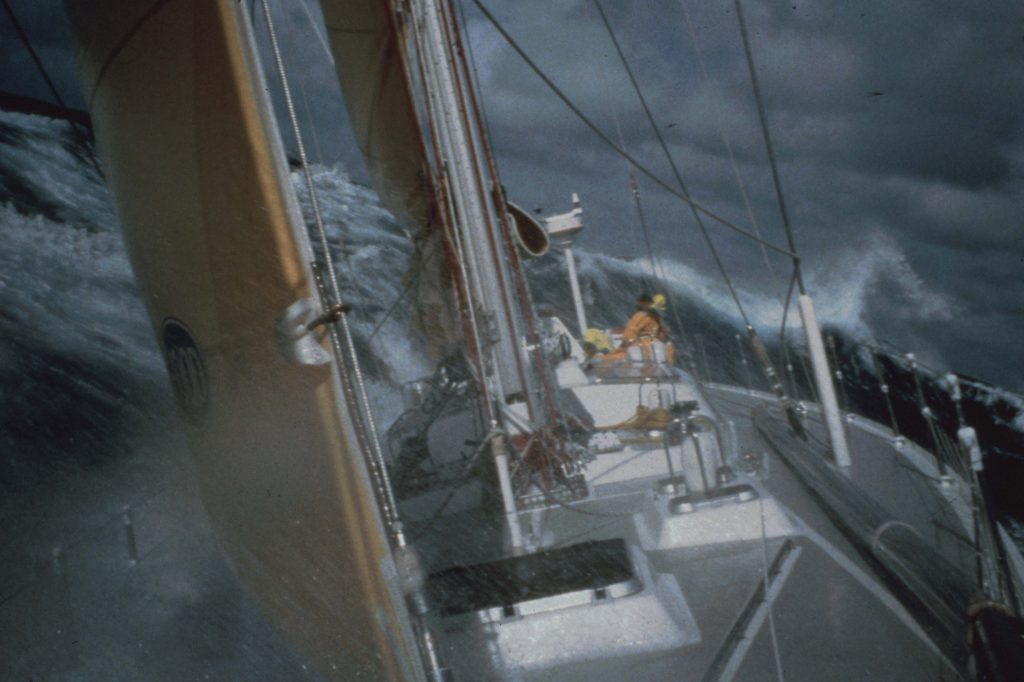
TM: You must have seen some amazing sights from the aspect of nature?
SW: I was lucky enough to do an expedition down to Antarctica a few years ago with some friends. Down there you see the Aurora Australis on the Antarctic peninsula sailing through the icebergs with penguins and leopard seals, humpback wales and all kinds of amazing wildlife all around us.
But equally I was running adventure charter expeditions in the High Arctic where you get the Aurora Borealis and the midnight sun which never sets, that’s pretty weird. There’s a different set of wildlife there, polar bears, arctic foxes and other amazing wildlife. The sailing adventures have taken me to some pretty incredible places, especially in the high latitude.
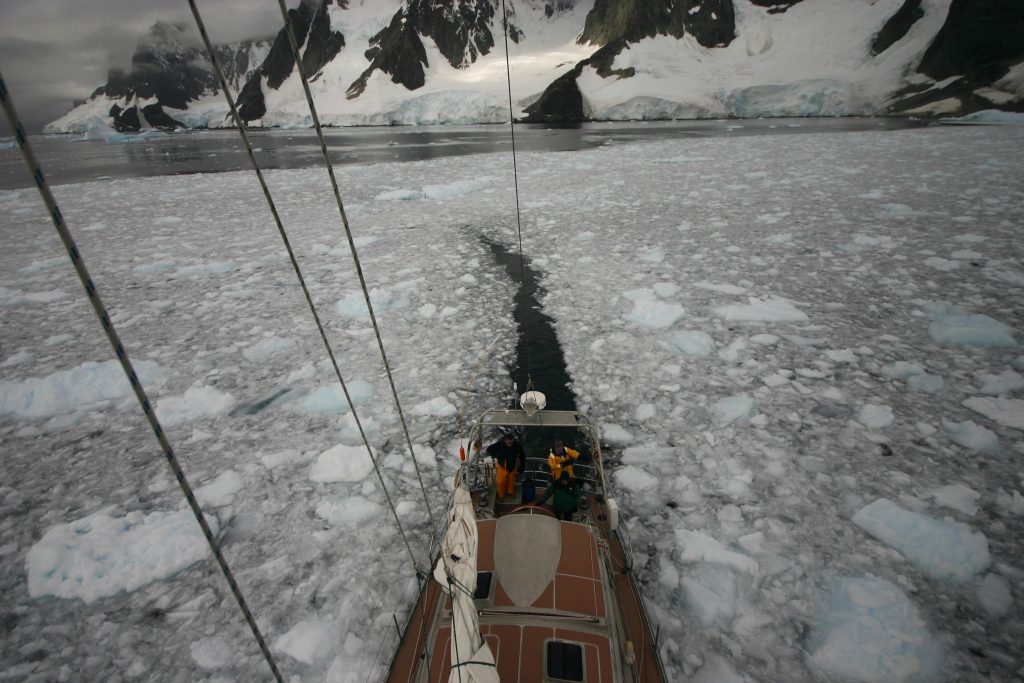
TM: Tell us about your more recent passion, flying…
SW: The feeling I got when I was learning to sail is similar to when I got into flying Paramotors. A Paramotor is a backpack aircraft, so a paraglider with an engine on your back. What really attracted me was it was the only form of powered flight which you could take on a yacht. What I always dreamed of was going to these amazing places, unpacking the paramotor off the yacht, taking it to the beach to set up, then launching it and flying inland to explore places I’d never really be able to see.
I got into it about five years ago, in that time I’ve been lucky enough to fly from Victoria Falls in Zimbabwe, the whole length of Botswana down to South Africa, literally in an aircraft you can just walk around in. For me it feels so much like sailing in terms of adventure, getting the weather and the route right, getting your kit sorted out.
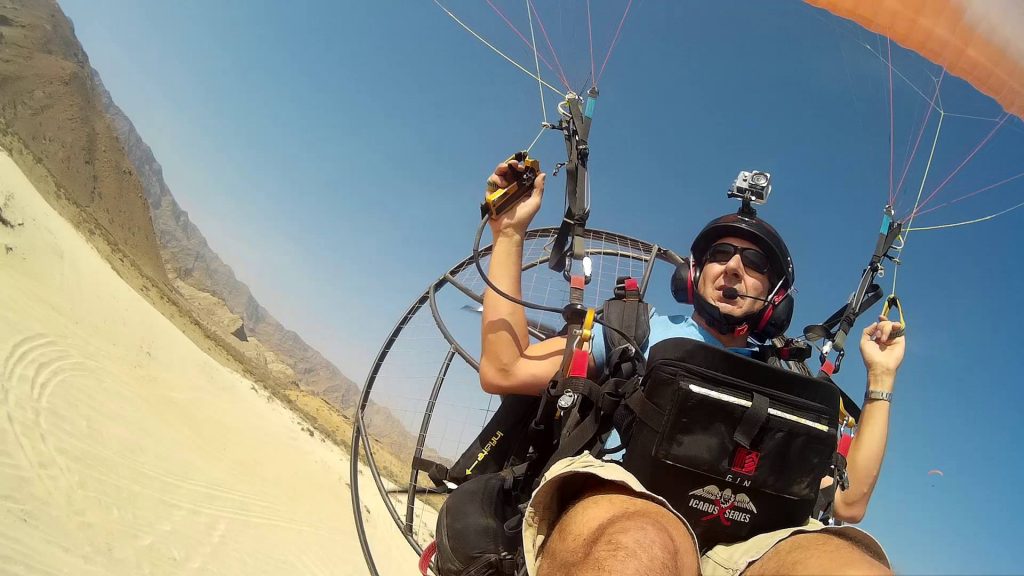
TM: That sense of freedom must be incredible?
SW: It is. I’ve really got into what we call para-bivvying. I launch my Paramotor with a little pack on my lap in which I’ve got a small bivvy, a sleeping bag, a camping stove and some other essentials. You can just go out into the likes of the Brecon Beacons, or Scotland, fly wherever you want to fly, land in field that takes your fancy, get some fuel at a petrol station. Pre-lockdown we were going on lots of trips around the UK, that’s just an amazing adventure opportunity.
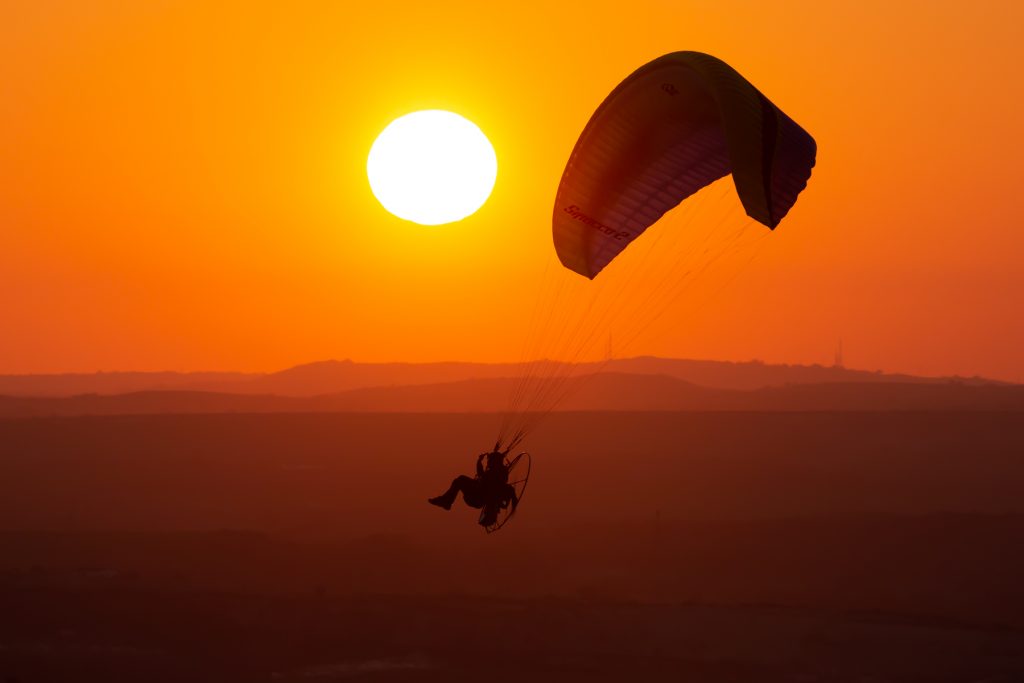
TM: Tell us about that feeling when you do something like bridging the globe or going off flying on a Paramotor adventure…
SW: Both are amazing feelings. Obviously, finishing a big leg at sea your usually shattered and as you get close to land, you have to worry about navigation, rocks and regulations, so as skipper you probably haven’t slept for 36 hours, then you get in and have a few beers and it’s like being on a different planet.
But I often speak to my friends about the feeling of stepping out of the sky with a Paramotor. Even if I have the worst day at work, you have a ten minute flight buzzing around, then you come into land literally just stepping out of the sky and the endorphins are cursing through your veins. It’s a really amazing feeling. I suppose on a shorter time scale it’s similar to achieving those big things at sea.
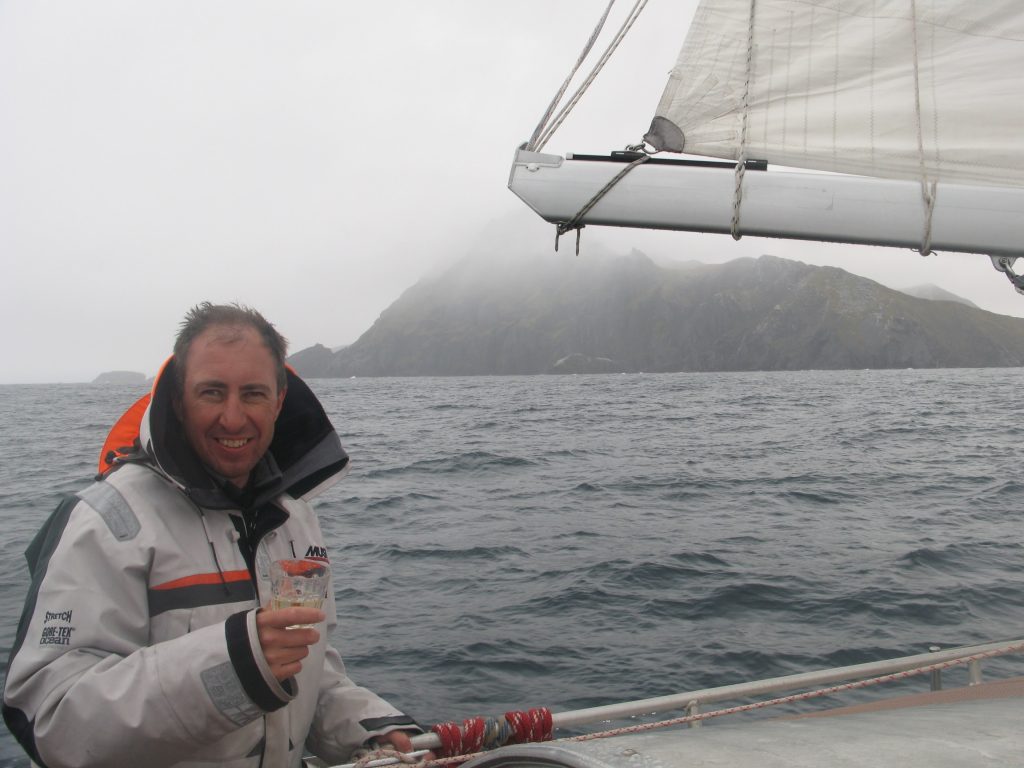
TM: We like to finish off with a piece of wisdom or a life lesson you may have learned through your adventures. Does anything come to mind?
SW: I guess it’s staying open minded and curious, if it wasn’t for being that way I’d have never had these adventures. Try something, learn from it and do it even better the next time, for me that’s the key and it’s how I try and live my life.
For more info on paramotoring head to: https://parajet.com/
Click the banner to share on Facebook
